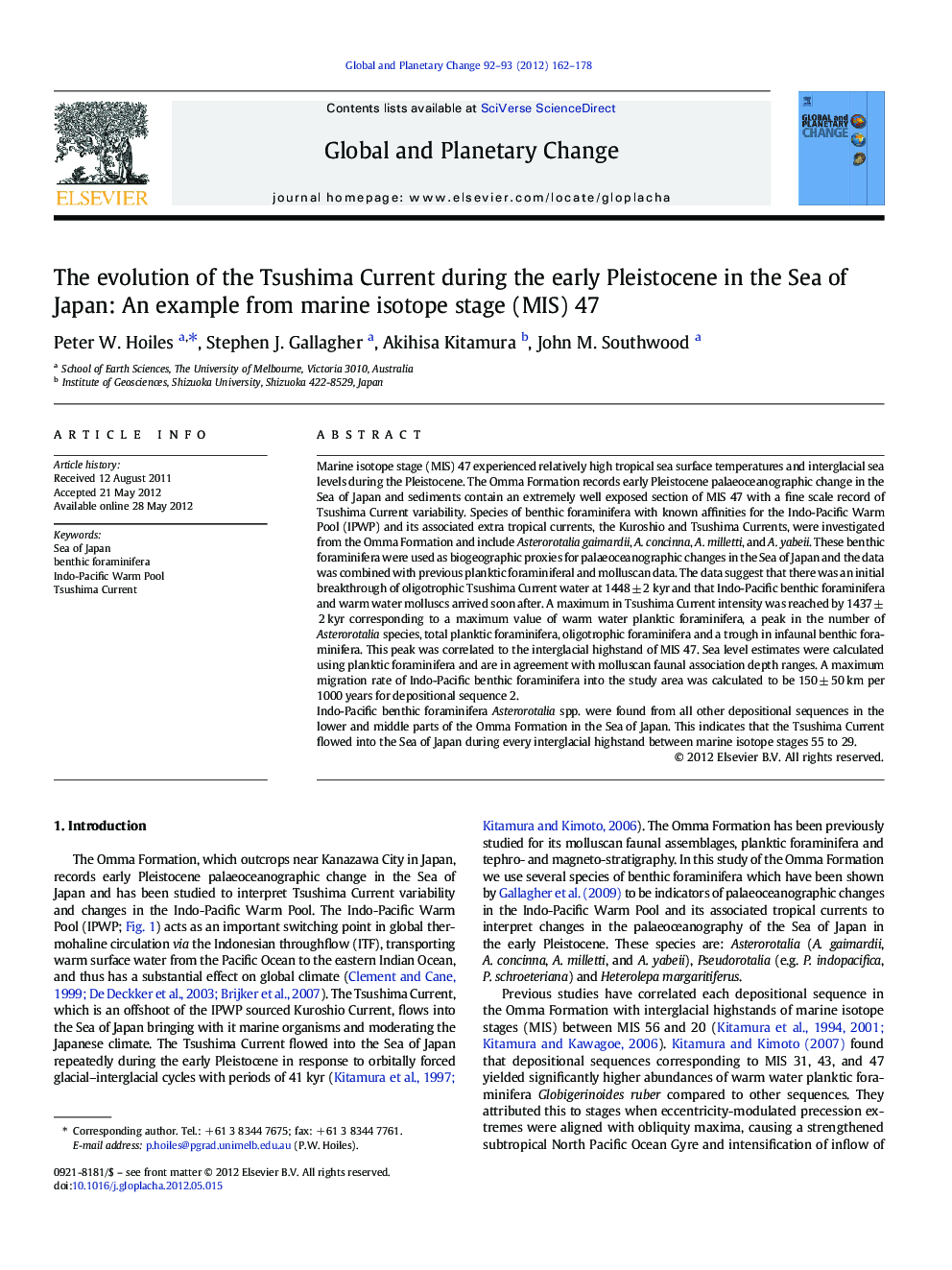| کد مقاله | کد نشریه | سال انتشار | مقاله انگلیسی | نسخه تمام متن |
|---|---|---|---|---|
| 4463640 | 1621685 | 2012 | 17 صفحه PDF | دانلود رایگان |

Marine isotope stage (MIS) 47 experienced relatively high tropical sea surface temperatures and interglacial sea levels during the Pleistocene. The Omma Formation records early Pleistocene palaeoceanographic change in the Sea of Japan and sediments contain an extremely well exposed section of MIS 47 with a fine scale record of Tsushima Current variability. Species of benthic foraminifera with known affinities for the Indo-Pacific Warm Pool (IPWP) and its associated extra tropical currents, the Kuroshio and Tsushima Currents, were investigated from the Omma Formation and include Asterorotalia gaimardii, A. concinna, A. milletti, and A. yabeii. These benthic foraminifera were used as biogeographic proxies for palaeoceanographic changes in the Sea of Japan and the data was combined with previous planktic foraminiferal and molluscan data. The data suggest that there was an initial breakthrough of oligotrophic Tsushima Current water at 1448 ± 2 kyr and that Indo-Pacific benthic foraminifera and warm water molluscs arrived soon after. A maximum in Tsushima Current intensity was reached by 1437 ± 2 kyr corresponding to a maximum value of warm water planktic foraminifera, a peak in the number of Asterorotalia species, total planktic foraminifera, oligotrophic foraminifera and a trough in infaunal benthic foraminifera. This peak was correlated to the interglacial highstand of MIS 47. Sea level estimates were calculated using planktic foraminifera and are in agreement with molluscan faunal association depth ranges. A maximum migration rate of Indo-Pacific benthic foraminifera into the study area was calculated to be 150 ± 50 km per 1000 years for depositional sequence 2.Indo-Pacific benthic foraminifera Asterorotalia spp. were found from all other depositional sequences in the lower and middle parts of the Omma Formation in the Sea of Japan. This indicates that the Tsushima Current flowed into the Sea of Japan during every interglacial highstand between marine isotope stages 55 to 29.
► Tsushima Current flows into the Sea of Japan during early Pleistocene highstands.
► Indo-Pacific benthic foraminifera were found in Omma Formation sediments.
► New data concurs with previous molluscan and planktic foraminiferal studies.
► MIS 47 shows detailed changes in oceanographic conditions in the Sea of Japan.
Journal: Global and Planetary Change - Volumes 92–93, July 2012, Pages 162–178